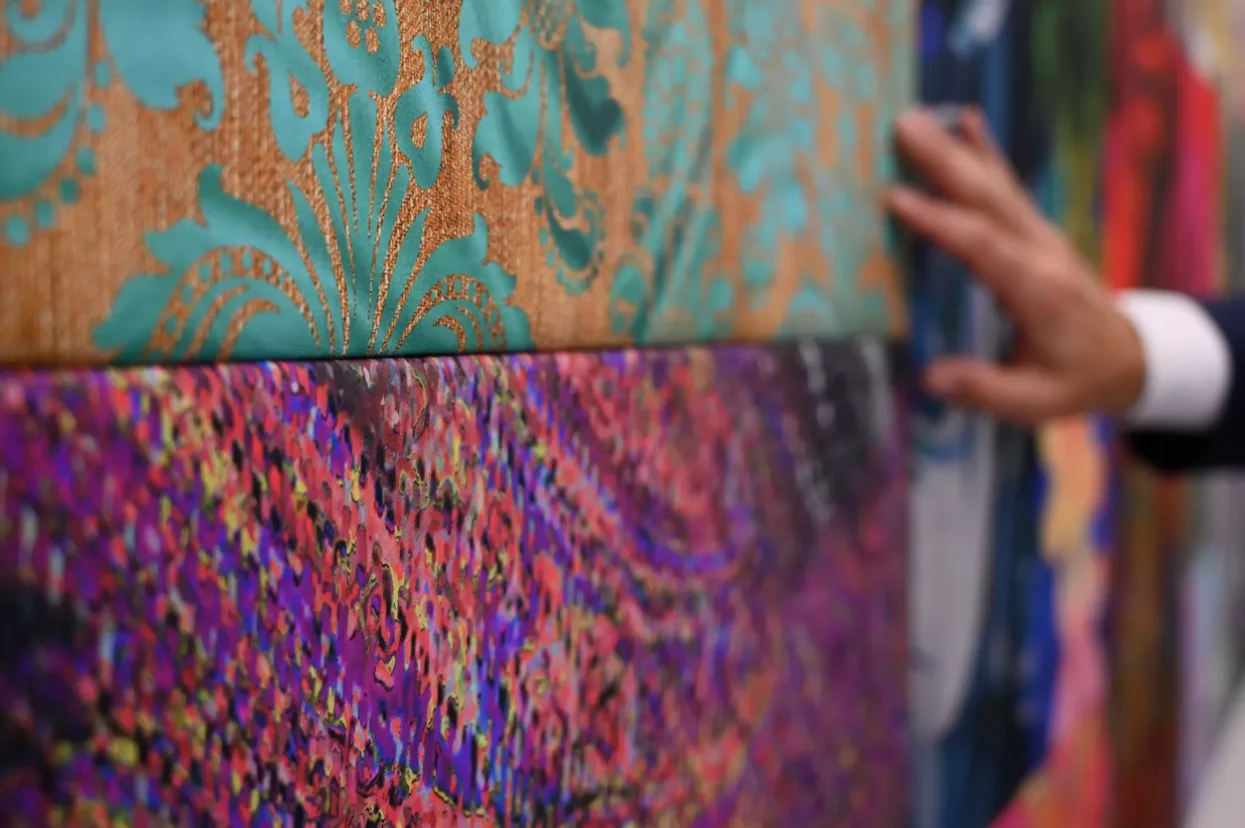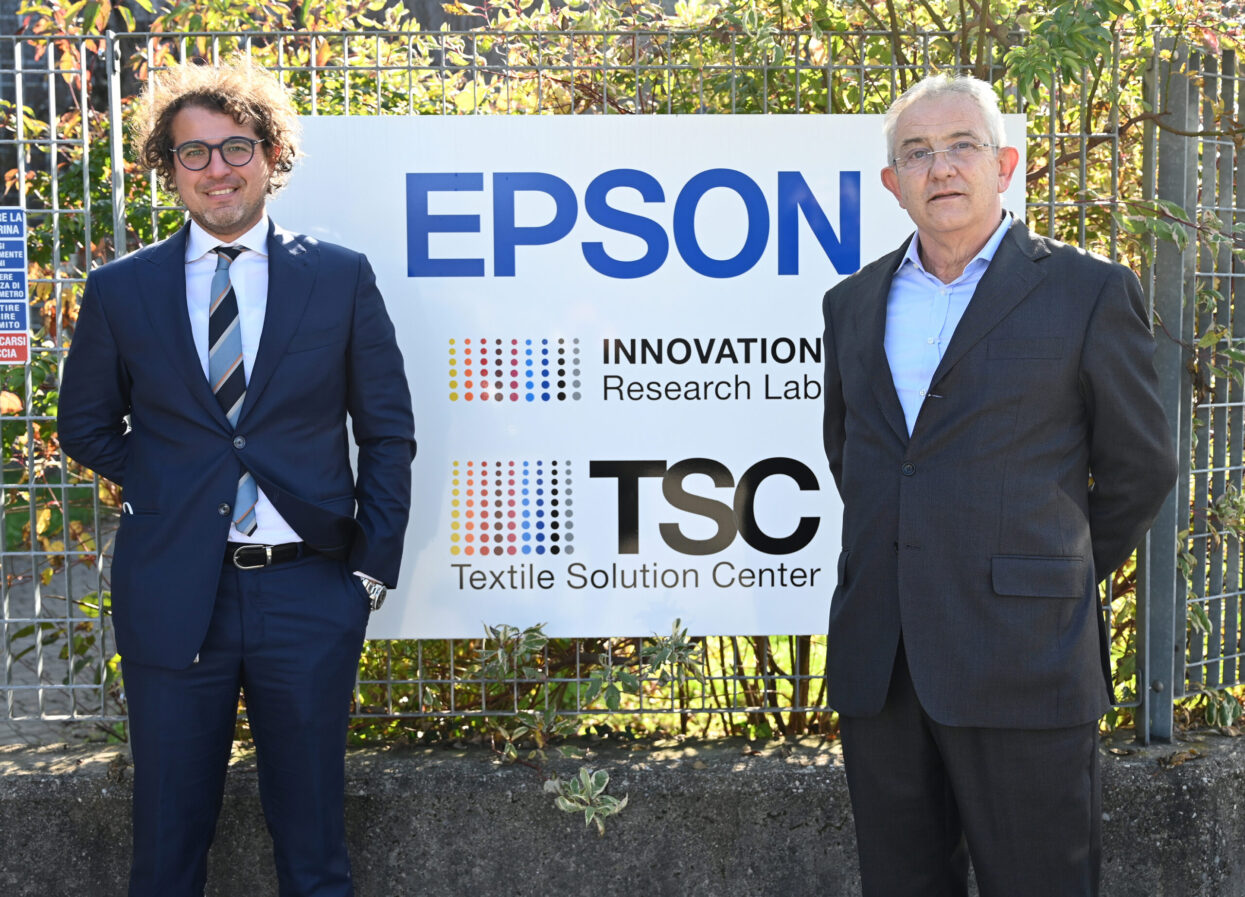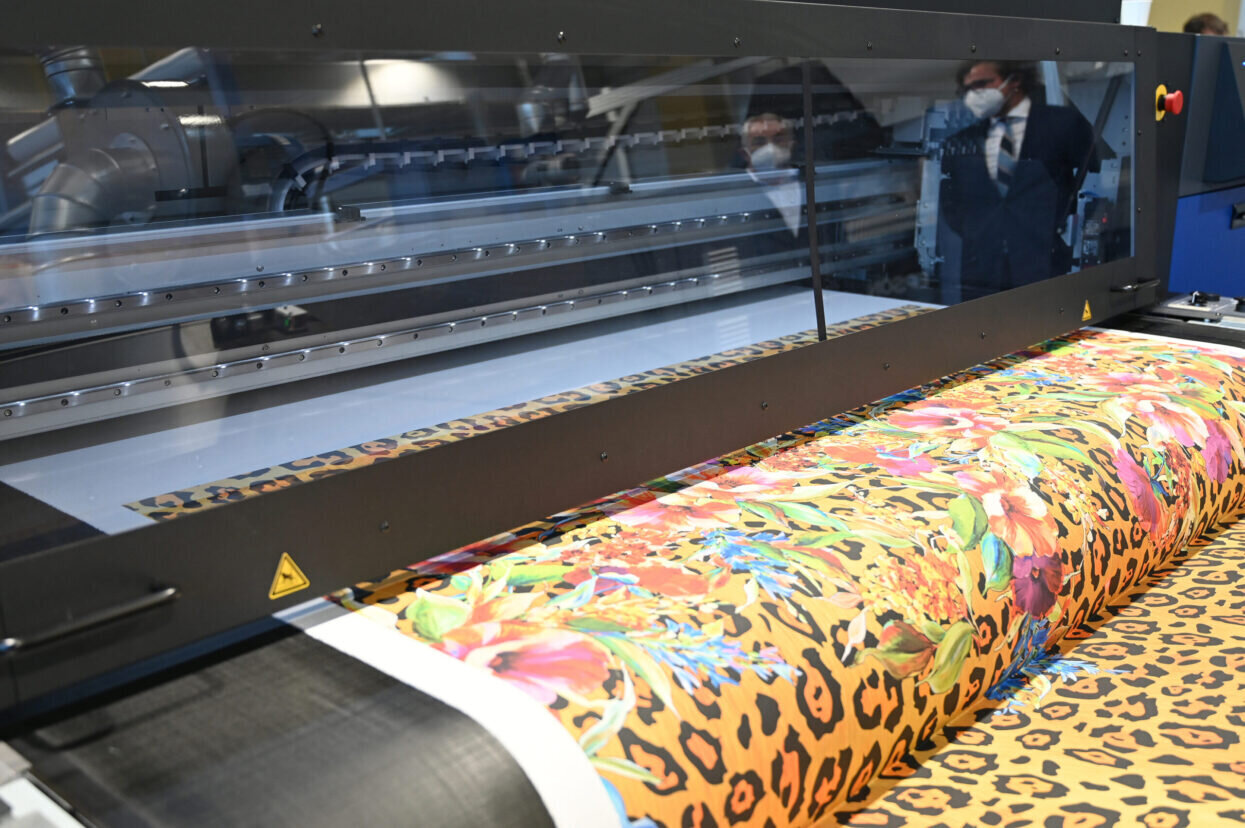
Debbie McKeegan speaks to Sandro Robustelli about his family owned textile printing business, Robustelli. Sandro shares his technical knowledge of the textile manufacturing process and digital textile printing advances.
The Robustelli family have an esteemed reputation within the textile industry. The production machinery that they manufacture underpins high-quality textile printing installations across the globe.

As a family business that was founded in Italy, almost 72 years ago, the company and their experienced engineering team have an inherent knowledge of the textile industry. How the sector has evolved, and how to fine-tune the many layers of ancillary machinery and engineering required, to create a high-quality textile printing mill.
With a deep technical knowledge of the textile manufacturing process, and its nuances, Robustelli foresaw the adoption of digital printing equipment almost two decades ago.
Operating in Como, in the heart of the Italian textile district, Robustelli are located in a world renown area, at the epicenter of luxury printed textile production.
It is with this knowledge and understanding that the Robustelli family began their journey to a digital future. Today the Como district manufactures over 80% of its printed production using digital technologies. Much of which is produced using the Epson Monna Lisa series, pioneered by Robustelli in collaboration with Epson technology. Over the years this remarkable partnership has also evolved, with Epson purchasing Robustelli in 2016.
As the adoption of digital textile printing advances, and industrial digital textile production (which now surpasses over 3 billion metres per year) grows at an accelerating rate – we look back on the Robustelli journey in this interview with Sandro Robustelli.
“Robustelli was founded by my father and his two brothers in 1950. My father originally began his engineering business producing parts and accessory for machine tools in particular precision grinding machine. But because he was located in Como, in the textile area, he saw an opportunity and started to produce printing equipment, rotary printing machinery and flatbed printing tables. He began with hand printing carriage’s and then progressed on to develop automatic machinery. To support the industry, my father also developed and sold engraving machinery for rotary and flatbed production”.
“Then in 1995/2000 we began to explore the market and the application of digital ink jet technology – which was very new. At this that time, myself and my brother already worked in the company, as the second generation. We decided to begin the development and the manufacture of digital textile equipment, for digitally printing direct on the fabric. But this was not easy, because we didn’t have the complete technology. But we immediately focused our attention to Epson because with Epson we knew that they had a leading print head technology for printing directly onto fabric”.

Image credit: EPSON.
“We already had a good working relationship with German company using wax jet technologies for some time in our engraving and traditional printing systems. We had the first contact with Epson in Japan in 2001. And we were very lucky, that the company believed in us -immediately we started this cooperation. In 2003 we presented the Monna Lisa”
“The Monna Lisa machine was designed and built, almost 20 years ago, and was the first real industrial digital textile printing machine. Before the Monna Lisa other machines on the market were developed by modifying the large format graphic plotter”.
“With our extensive knowledge and textile provenance we adapted and modified to add the required technology, specific to high volume textile production. As technology has advanced further over the last 20 years, the Monna Lisa has developed into a high quality, industrial digital textile printing solution”.
“When we started to sell the first machines into the major printing companies in Como in 2003 – the industry was not convinced and did not believe in the future benefits of digital printing. But slowly, slowly the industry started to believe in the application of the technology. By 2011 – We had over 100 Monna Lisa machines in the market.”
“Our research and development continues with the support of Epson’s global team. Whilst also paying important attention to the environmental impact of our technology and its application. One of the big advantages of digital textile printing is that it saves water, energy and manufacturing space when compared directly to traditional printing. We continually improve the Monna Lisa series – as Epson produce new heads, we upgrade the machinery.”
“In 2008, research carried out by Carlo Cattaneo University LIUC in Varese, confirmed that we save more than 40% of water and 75% of energy when printing textiles using the Monna Lisa. In 2009 we won the Ecohitech award for saving energy. Then in 2014 we upgraded the heads again and updated to the Monna Lisa EVO2 to further improve the use of energy”.
“With the support of Epson and For.tex, the Textile Solution Center was inaugurated in 2014 and it’s here where we continue to invest in the research and the continued development of the Monna Lisa series.”
“In 2016 when Epson made the acquisition of Robustelli, this was painful because Robustelli was a family business, with three generations employed – it was our life”.
“It wasn’t an easy decision. But we also saw the opportunity to change our company from a family business, that worked mostly in Italy and Europe, to become a multinational entity. That vision, to become global, as a family we could not reach, and we decided to accept the offer from Epson, and we sold the company. This is the short story for our company. And now, 5 years later, we are very satisfied that we made the right decision. And we hope that the story will continue forever…”
“My future in the company will be very short. One day I will retire, I keep promising to do so – but I still work. The future is for my son Paolo and my hope is that he will continue to work in the company, which my father began as I said earlier, over 70 years ago.”
“I had a vision to transform the manufacturing technology of textile printing, and I look forward to Paolo taking over the reins and continuing our families work…”